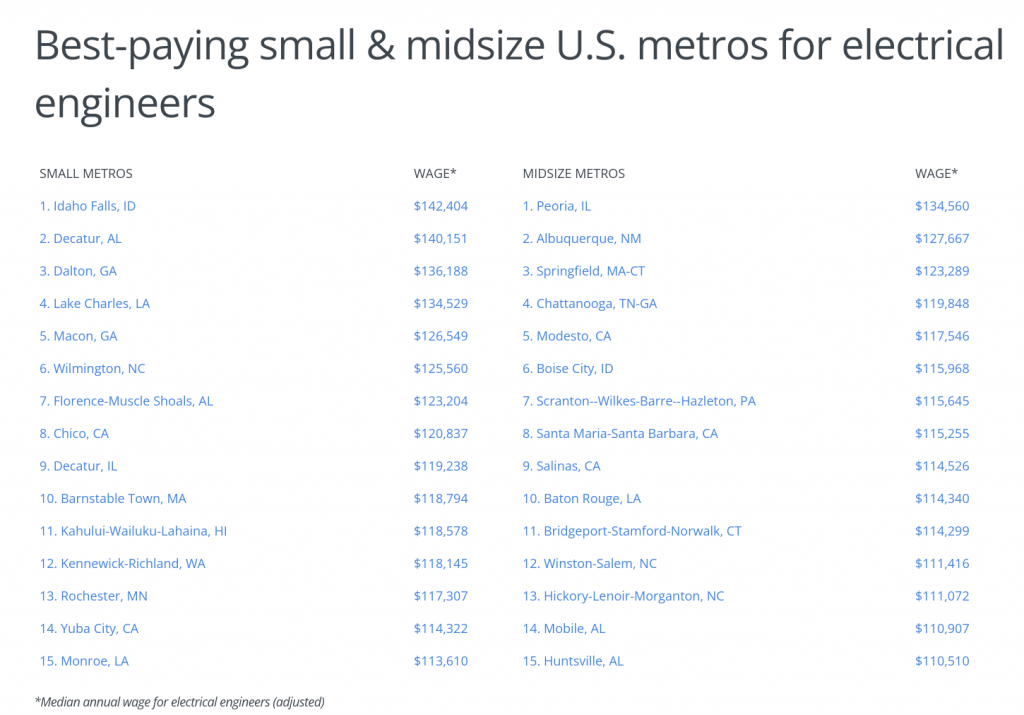
Photo Credit: Africa Studio / Shutterstock
Of the many challenges that have faced the global supply chain since the COVID-19 pandemic began, a shortage of semiconductor chips has been one of the most significant.
Factory shutdowns and global shipping issues as a result of the pandemic left many industries without the essential electrical parts that enable many modern technologies. The auto manufacturing industry was particularly hard-hit as a result of the chip shortage, leading to a scarcity of new cars and steep price increases for used vehicles. But other industries, from computers and consumer electronics to medical equipment to infrastructure, suffered as well. Experts estimate that semiconductors themselves constitute only around 0.3% of U.S. GDP, but are critical to goods that represent 12% of GDP.

Decreased availability has rapidly accelerated price increases for semiconductors and electrical components since the beginning of 2020. This has reversed a longer-term trend of decline over time attributable to innovation and economies of scale in semiconductor production. At the start of 2020, the import price for a semiconductor was 9.2% lower than it was in 2012 and the export price was 2.5% lower. Now, the import price is just 2.4% lower, while the export price is 4.6% higher than it was in 2012.
The weaknesses of the global semiconductor supply chain inspired U.S. policymakers to respond with new investments in domestic production. The CHIPS and Science Act that became law in August 2022 provided more than $52 billion in funding for research and development and manufacturing incentives for the industry.
In the wake of the semiconductor shortage and the CHIPS and Science Act, the role of electrical and electronics engineers has become even more critical to the U.S. economy. Electrical engineers design, develop, test, and supervise the manufacture of electrical equipment, including semiconductors. As more of the modern economy becomes tied to electronics, engineers’ work is vital to continued growth and innovation. The Bureau of Labor Statistics predicts that most of the growth in electrical engineering employment will be in high-demand fields like semiconductors, solar installations, consumer electronics, and communications technology.

Electrical engineers can be found in nearly every part of the U.S. economy. However, most job opportunities for electrical engineers are found in the professional, scientific, and technical services and manufacturing industries. Together, these two industry categories represent two-thirds of employment in the field. The utilities industry is the next largest employer of electrical engineers, and it accounts for nearly 20,000 of them in the U.S.

Compensation for electrical engineers can vary by geography. Many of the states that rank highly for electrical engineer pay (after adjusting for differences in cost of living) have tech-focused economies, like Maryland ($115,484) and Massachusetts ($112,384). And topping the list is New Mexico, which has a robust energy industry and a number of federal government research labs, where the median electrical engineer receives an annual cost-of-living adjusted wage of $131,430.
Unsurprisingly, however, the home of the Silicon Valley region may be the best overall location for electrical engineers’ wages. Despite high living costs, California still offers the third-highest adjusted median wage for electrical engineers at $115,236. At the metro level, the state has five of the top 15 best-paying cities for electrical engineers, including San Jose and nearby metros like San Francisco, Sacramento, and Fresno.
The data used in this analysis is from the U.S. Bureau of Labor Statistics and the U.S. Bureau of Economic Analysis. To determine the best-paying locations for electrical engineers, researchers at Porch calculated the cost-of-living adjusted median annual wage for electrical engineers. In the event of a tie, the location with the greater unadjusted median annual wage for electrical engineers was ranked higher.
Here are the best-paying U.S. metropolitan areas for electrical engineers.

Best-Paying Large U.S. Metros for Electrical Engineers

Photo Credit: Agnieszka Gaul / Shutterstock
15. Indianapolis-Carmel-Anderson, IN
- Median annual wage for electrical engineers (adjusted): $105,903
- Median annual wage for electrical engineers (unadjusted): $100,290
- Median annual wage for all architecture & engineering jobs (unadjusted): $78,130
- Concentration of electrical engineers (compared to average): -30%

Photo Credit: Sean Pavone / Shutterstock
14. Tulsa, OK
- Median annual wage for electrical engineers (adjusted): $106,695
- Median annual wage for electrical engineers (unadjusted): $99,120
- Median annual wage for all architecture & engineering jobs (unadjusted): $78,270
- Concentration of electrical engineers (compared to average): +18%

Photo Credit: Jon Bilous / Shutterstock
13. Charlotte-Concord-Gastonia, NC-SC
- Median annual wage for electrical engineers (adjusted): $106,924
- Median annual wage for electrical engineers (unadjusted): $101,150
- Median annual wage for all architecture & engineering jobs (unadjusted): $77,840
- Concentration of electrical engineers (compared to average): -23%

Photo Credit: ESB Professional / Shutterstock
12. Washington-Arlington-Alexandria, DC-VA-MD-WV
- Median annual wage for electrical engineers (adjusted): $108,251
- Median annual wage for electrical engineers (unadjusted): $120,700
- Median annual wage for all architecture & engineering jobs (unadjusted): $101,730
- Concentration of electrical engineers (compared to average): +9%

Photo Credit: Sean Pavone / Shutterstock
11. San Francisco-Oakland-Hayward, CA
- Median annual wage for electrical engineers (adjusted): $109,106
- Median annual wage for electrical engineers (unadjusted): $128,090
- Median annual wage for all architecture & engineering jobs (unadjusted): $102,730
- Concentration of electrical engineers (compared to average): +59%

Photo Credit: ESB Professional / Shutterstock
10. Boston-Cambridge-Nashua, MA-NH
- Median annual wage for electrical engineers (adjusted): $109,864
- Median annual wage for electrical engineers (unadjusted): $121,070
- Median annual wage for all architecture & engineering jobs (unadjusted): $98,610
- Concentration of electrical engineers (compared to average): +98%

Photo Credit: Chones / Shutterstock
9. Los Angeles-Long Beach-Anaheim, CA
- Median annual wage for electrical engineers (adjusted): $109,911
- Median annual wage for electrical engineers (unadjusted): $122,990
- Median annual wage for all architecture & engineering jobs (unadjusted): $98,170
- Concentration of electrical engineers (compared to average): +26%

Photo Credit: Checubus / Shutterstock
8. Seattle-Tacoma-Bellevue, WA
- Median annual wage for electrical engineers (adjusted): $112,857
- Median annual wage for electrical engineers (unadjusted): $126,400
- Median annual wage for all architecture & engineering jobs (unadjusted): $100,580
- Concentration of electrical engineers (compared to average): +122%

Photo Credit: f11photo / Shutterstock
7. Atlanta-Sandy Springs-Roswell, GA
- Median annual wage for electrical engineers (adjusted): $117,464
- Median annual wage for electrical engineers (unadjusted): $115,350
- Median annual wage for all architecture & engineering jobs (unadjusted): $78,700
- Concentration of electrical engineers (compared to average): -11%

Photo Credit: Feoktistoff / Shutterstock
6. Sacramento–Roseville–Arden-Arcade, CA
- Median annual wage for electrical engineers (adjusted): $120,952
- Median annual wage for electrical engineers (unadjusted): $128,330
- Median annual wage for all architecture & engineering jobs (unadjusted): $100,700
- Concentration of electrical engineers (compared to average): +3%

Photo Credit: Chuck Wagner / Shutterstock
5. New Orleans-Metairie, LA
- Median annual wage for electrical engineers (adjusted): $124,241
- Median annual wage for electrical engineers (unadjusted): $120,390
- Median annual wage for all architecture & engineering jobs (unadjusted): $79,980
- Concentration of electrical engineers (compared to average): -46%

Photo Credit: Ryan Conine / Shutterstock
4. Austin-Round Rock, TX
- Median annual wage for electrical engineers (adjusted): $124,862
- Median annual wage for electrical engineers (unadjusted): $127,110
- Median annual wage for all architecture & engineering jobs (unadjusted): $80,120
- Concentration of electrical engineers (compared to average): +65%

Photo Credit: Matt Gush / Shutterstock
3. Fresno, CA
- Median annual wage for electrical engineers (adjusted): $128,277
- Median annual wage for electrical engineers (unadjusted): $128,020
- Median annual wage for all architecture & engineering jobs (unadjusted): $87,710
- Concentration of electrical engineers (compared to average): –44%

Photo Credit: Rob Hainer / Shutterstock
2. Birmingham-Hoover, AL
- Median annual wage for electrical engineers (adjusted): $130,011
- Median annual wage for electrical engineers (unadjusted): $120,390
- Median annual wage for all architecture & engineering jobs (unadjusted): $78,750
- Concentration of electrical engineers (compared to average): +57%

Photo Credit: Uladzik Kryhin / Shutterstock
1. San Jose-Sunnyvale-Santa Clara, CA
- Median annual wage for electrical engineers (adjusted): $138,698
- Median annual wage for electrical engineers (unadjusted): $155,480
- Median annual wage for all architecture & engineering jobs (unadjusted): $128,560
- Concentration of electrical engineers (compared to average): +236%
Detailed Findings & Methodology
The data used in this analysis is from the U.S. Bureau of Labor Statistics Occupational Employment and Wage Statistics and the U.S. Bureau of Economic Analysis Regional Price Parities. To determine the best-paying locations for electrical engineers, researchers at Porch calculated the cost-of-living adjusted median annual wage for electrical engineers. In the event of a tie, the location with the greater unadjusted median annual wage for electrical engineers was ranked higher. To improve relevance, only metropolitan areas with at least 100,000 residents were included, and metros were grouped into cohorts based on population size: small (100,000–349,999), midsize (350,000–999,999), and large (1,000,000 or more). Note, only locations with complete data available for all fields were included in this analysis.



